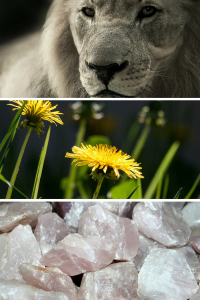by Dr. Judyth Reichenberg-Ullman and Dr. Robert Ullman
Which Homeopathic Medicine Do You Need According to the Sensation Method?
One Patient, One Medicine
Anita, who suffers from migraines, hormonal problems, colitis, memory loss, elevated cholesterol, depression, and anxiety, consulted with us for the first time earlier this week. She listed the names of five current physicians: a psychiatrist, cardiologist, internist, gastroenterologist, and neurologist. Her list of medications was actually reasonably short, for having that many doctors: Cymbalta, Trazodone, Omeprazole, and Metropolol. In response to the question on our medical history form, “What brings you to consult us?’ the patient responded, “Frustration with my current doctors. I am given too many medications and have too many side effects.”
Bingo! This is precisely the reason to consult a homeopath. Homeopathy could not be more different from conventional, or even alternative, medicine in this regard. The premise of homeopathy is that there is one single medicine for each individual, the simillimum, which can strengthen the vital force and bring the organism back into balance. That is a tall order, given that there are now at least 3500 homeopathic medicines available! It is the science and art of homeopathy to have the expertise to find that one medicine for each patient. This selection is based on an in-depth interview, or homeopathic case taking, followed by a case analysis, and a prescription. When the correct medicine is found, the change is clear, profound, and, may be quite rapid. But, how in the world can a homeopath find that one substance in nature that the patient needs?
We are not suggesting that you can read this article and then choose the one substance, among the 3500, that is the one that best fits you. To the contrary, homeopathic case taking, case analysis, and the prescribing of the simillimum is a science and an art. We continue, after thirty years of practice, to learn more about materia medica (the medicines) and about the intricacies of case taking, of understanding our patients, and of prescribing the best possible medicine. But, this article will hopefully provide a basic understanding of the Schema of homeopathic prescribing developed by our teacher, Dr. Dr. Sankaran Sankaran, of Mumbai, India. It is most important to grasp what is called the vital sensation. This is the common sensation, or experience, that connections the mind and body and runs, as a thread, through all of the patient’s symptoms. Through an in-depth focus on the chief complaint(s) of the individual, focusing on the specific experience rather than the patient’s life story, we come to a point where the vital sensation reveal itself beautifully. It is not a mental process. In fact, in the course of the homeopathic interview using the vital sensation approach, the patient enters a space beyond the mind. What (s)he begins to relate may not even make sense in a logical fashion. It is at this point that the homeopath knows that the homeopath knows that the patient will lead us to the medicine, or substance, that is the simillimum.
We are trained, in this method, to follow the energy of the patient. When s(he) begins to enter the realm of experience of the vital sensation, moving beyond logical thought, something else interesting often begins to happen. The individual becomes animated and excited, and begins to gesticulate with hand gestures. These gestures are a representation of this energy and lead the person to indicate which medicine is needed.
Kingdoms and Subkingdoms
In the great majority of cases, the individual will need a medicine belonging to the mineral, plant, or animal kingdom. There are other groups of medicines, such as those made from nosodes (the products of disease),rarely imponderables (such as Sun, Magnetic poles, Electricity), or particular drugs made into homeopathic medicines (also very infrequently). Through understanding the homeopathic “map” of these kingdoms, it is often possible to find, in an exciting yet straightforward and confirmable manner, the simillimum. Once the kingdom and subkingdom reveal themselves, then the homeopath needs to find the specific member of the kingdom or subkingdom needed by the patient. This is where the concept of miasm becomes relevant, which we will discuss later in the article. This article is a very brief summary of the sensation method, which we have been studying and practicing since 1993. It has revolutionized our practice, as well as those of homeopaths worldwide. We routinely prescribe medicines we never would have even heard of, much less considered using for our patients, prior to studying with Dr. Sankaran.
The results have been, in many cases, spectacular and mind-boggling. And the process of case taking has taken on a life of its own. Each case is fresh and one of a kind.
The Mineral Kingdom
There are particular themes that arise with patients needing medicines from the mineral kingdom. Think structure—structure of one’s home, one’s life, one’s concerns. This structure may take the form of relationships, both with others and with oneself, identity, and performance. Concerns center around the structure of one’s life, which may express itself in issues of health, work, responsibility, safety, security, finances, competence, attack and defense. There is a sense of order, organization, and detail. The individual may use numbers, dates, and other data in recounting symptoms. We choose which mineral a person needs based on the periodic table, which is the same periodic table used in chemistry. Dr. Sankaran’s schema systematizes the rows and columns of the homeopathic periodic table in order to select the correct medicine for the individual. The primary rows start at the top with Row 1 (helium and hydrogen), which represents the state of conception, of coming into existence. Row 2 (lithium, beryllium, boron, carbon, nitrogen, oxygen, fluorine, and neon) relate to issues of life as a fetus and of labor/birth. Row 3 (sodium, magnesium, aluminum, silica, phosphorus, sulfur, chlorine, and argon) are concerned with childhood, nourishment, identity, trust, and relationships. Row 4 (potassium, calcium, scandium, titanium, vanadium, chromium, manganese, iron, cobalt, nickel, copper, zinc, gallium, germanium, arsenic, selenium, bromine, and krypton focus on security. Row 5 (rubidium, strontium, yttrium, zirconium, niobium, molybdenum, technetium, ruthenium, rhodium, palladium, silver, cadmium, indium, tin, antimony, tellurium, iodine, and xenon) center around issues of creativity and performance. Row 6 (cesium, barium, lanthanum, hafnium, tantalum, tungsten, rhenium, osmium, iridium platinum, gold, mercury, thallium, lead, bismuth, polonium, astatine, and radon) have themes of responsibility, leadership, and power. There are two more obscure rows below, the lanthanides, which are lesser known and tend to deal with issues of autonomy and creativity, and the actinides, referred to by some as the Uranium series. The homeopathic periodic table is also categorized according to columns, the elements to the left being more at the initial stages of development, and to the right of having passed through the stages of life and being more in the phase of having reached the zenith of life and being in a period of phasing downwards.
You can begin to see the specificity of selecting a homeopathic medicine according to the sensation method. Not only are the elements considered as possible medicines, but also mineral salts and derivatives. Carbon, for example, includes any substance in nature based on carbon, and the same with all of the other elements. The specificity is astounding.
The Plant Kingdom
The themes of those needing homeopathic medicines made from plants include sensitivity and reactivity. The focus is on the particular sensation and its opposite. These individuals tend to be emotional rather than intellectual, and their concerns much more based on feelings than structured thoughts. Dr. Sankaran studied the homeopathic materia medica intensively to understand the particular sensation corresponding to the thirty-two most common plant families. These include: Anacardiaceae (theme of caught stiff, stuck, immobility); Apocynaceae (prostrated, paralyzed, contracted, lifeless); Araceae (burning, stinning, slapped;, Berberidaceae (sudden, intense changeabilty); Cactaceae (contraction and expansion); carnivorous plants (trapped, suffocating); Coniferae (fragile, brittle, disconnected); Cruciferae (obstructed flow, blocked, stuck); Dioscoraceae (twisting, coiled, stretched, pulled); Ericaceae (moving from one place to another, wandering); Euphorbiaceae (tight, stretched, tied, bound); Fungi (invaded, burrowing, boring); Geraniales (endurance, prolonged strength and exertion); Hamamelidae (light and heavy, floating, flying); Labiate (excitement, passion); Leguminosae scattered, fragmented); Liliflorae (forced out, squeezed); Loganiaceae (shocked, shattered); Magnolianae (bewildered, lost, confused); Malvales (attached and detached, separated); Papaveraceae (pain and painlessness, violence, agony and ecstasy); Piperaceae (boredom, amusement, pleasure); Primulaceae (paralyzed, lame); Ranunculaceae (excitement, irritability, exquisitely sensitive to many sensations, numb) ; Rosaceae (pinching, pressing, suffocation); Rubiaceae (overstimulation of mind; many ideas, joy); Rutaceae (squeezed, constricted, twisted, broken); Scrophulariaceae (bonds, connection and disconnection, indifference); Solanaceae (violence, sudden, explosive, terror, murder); Theales (injuries to nerves, punctures, penetrating wounds); Umbelliferae (sudden blows, riots, wounds); and Violales.(cutting, stabbing, stitching, pinching). Other plant families are also being studied to elucidate their homeopathic sensations. As an aside, individuals needing plant medicines often love plants, nature, and gardening. But that alone does not qualify someone for a plant medicine!
Regardless of the particular plant family and sensation, these patients are highly sensitive and emotional and their symptoms exhibit a number of modalities. This means that their symptoms are made better or worse by a number of external factors, which emphasizes again their sensitivity on many levels.
The Animal Kingdom
Patients needing animal medicines are animated, engaging, lively, and intense. Predominant issues are survival, dominance and aggression versus submission and weakness, predator and prey, conflict, competitiveness, sexuality, attractiveness, vigilance, and the division between one’s “higher and lower” natures (a kind of split). Speech is typically vivid and excited; they are great storytellers. Their natures are amorous, aggressive, playful, mischievous, jealous, restless, and quick to react.
Other characteristics are also clear, depending on the subkingdoms, which follow. Mammals: The more specific themes are connection with family, nourishment, belonging to the herd or pack, safety within the group, dominance/submission, self versus the group, clean and dirty, fight for supremacy within the group. The themes of the particular mammals become even more specific, such as cats (domestic or wild), dogs (domestic versus wolves), monkeys, rodents, etc.
Insects: Themes are business, restlessness, hurriedness, destructiveness, lewdness, suddenness, intensity of activity, shamelessness, and focus on very basic needs for survival.
Spiders: Busyness, hyperactivity, restlessness, quickness of movements, mischievousness, deceit, intrigue, dance, music, rhythm, colors.
Reptiles: Cunning, scheming, manipulative, jealous, hidden, sexuality, talkative, poisonous, behind the back, cold-blooded, deceit, disguise, sneaky, slithering.
Birds: Responsibility and freedom, bound and free, flying, restrained, caged, floating, soaring, expansion, high places, abused, keen vision, swoop, speed, predator/prey.
Mollusks: Withdrawal, protection, pulling in, retreat into one’s shell, vulnerability, claustrophobia, coming together, suffocated. Again, the specific sensation vary according to whether it is a bivalve, gastropod, or cephalopod.
Specificity According to Sensation
The purpose of this column is to introduce our readers to the parameters of the sensation method, in some detail, so that you can appreciate the remarkable specificity by which we and the other homeopaths using this method prescribe for our patients. We hope that, when we present cases in the future, our rationale and explanations will make more sense and be more understandable.


7 Comments